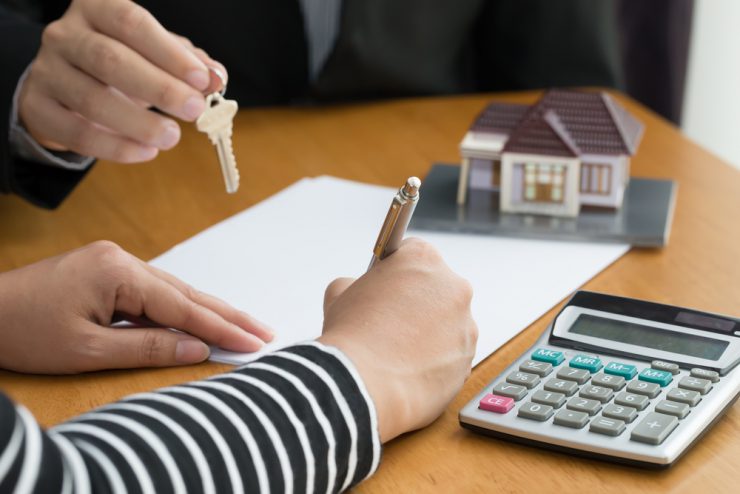If so, you’ll want to read this before you make anything official.
Do you feel as if your status as a “renter” will never change? In other words, have you possibly put your dreams of owning a home on hold forever?
If so, you’ll be glad to know that there’s a way to be a renter while also moving closer to your home owning dreams. It’s called a rent-to-own agreement, and it’s the perfect solution for some who can’t get or afford a mortgage for the time being, but would still like to set their sights on owning a home.
How Rent-To-Own Homes Work
You’re probably familiar with how a typical rental agreement works. You pay your landlord a certain amount every month (rent), and in exchange, they allow you to live in a property they own.
With rent-to-own, you still pay rent. However, some of your payment goes towards the purchase of that property at a future date when the lease ends.
Leases in such agreements typically last between one to five years. Once finished, you will have a credit with the landlord that can reduce the purchase price of the property you wish to make yours.
Things to Be Aware of Before Signing a Rent-To-Own Contract
As with any contract, you’ll want to do plenty of research before locking yourself into a rent-to-own agreement. These agreements are usually best when they are part of a government-run program, or they’re of the “lease-option” variety.
Both reduce your risk, and lease-option is favorable because while it lets you purchase the home before your lease ends, it doesn’t bind you like a “lease-purchase” agreement does.
Here are some other things to look out for before locking yourself into a rent-to-own contract:
Monthly Payments
Part of your monthly payment will be rent to the landlord. The rest will be an amount that goes towards the home’s future purchase. As such, you can expect to pay more out of pocket each month for living expenses.
Keep in mind that not all of what you pay extra will go towards the home’s purchase. Some of it will go into the landlord’s pocket as a fee for setting up this agreement.
Upfront Fees
Unlike a security deposit on a rental, a rent-to-own agreement usually has a nonrefundable, upfront fee that can equal 2.5-7 percent of the home’s purchase price. If your cash is low, this fee could be a tough obstacle to overcome.
Price Fluctuations
When you sign the rent-to-own contract, it will be for the home’s current value. If it decreases when the lease ends, you will still have to pay for the purchase price in the contract.
This can lead to a situation where the home decreases in value, and you end up overpaying for it in the future. Getting a mortgage for an amount that exceeds the home’s value could be troublesome down the road.
Repair and Maintenance Costs
Landlords usually pass these on to the eventual buyer in rent-to-own agreements. If you know anything about home repair and maintenance, you know it can be quite costly.
Punctual Payments
You can’t afford to miss payments when a rent-to-own contract is in place. Doing so could void the deal, causing you to lose whatever credited money you had towards the purchase of the house.




